
What can a basic understanding of Gaelic add to your hill days in Scotland? Kevin Woods, a recent student of the language, investigates.
Scottish gaelic is the tongue in which many of our mountains are named. If you've ever looked at the map and wondered what these names all mean, and what's more how to pronounce them, then you're far from alone. Without some basic grasp of the language you might be denying yourself knowledge that's both useful and enlightening. The prosaic and the poetic – you'll find both in Gaelic hill names. Sure, you can climb the hills without having a clue what they mean, but this added knowledge will give a window into both the physical landscape and its history.
In areas that no longer support a human population sufficient to name every hill and hollow of the land, these names serve as a link back to that past
Suppose you're heading up for a day on the Aonach Eagach. Your first climb takes you to Am Bodach (the old man), while to your east, you might spy his counterpart, A' Chailleach (the old woman). Such male and female pairings are quite common: for example, the Bodach of the Mamores has his counterpart in Na Gruagaichean (the maidens).
Once you've scrambled down Am Bodach, you'll head toward Meall Dearg (red hill), bronzed in colour from its microgranodiorite. If it's not clagged in as usual, you might see Garbh Bheinn (rough hill) to the north. If you continue along your ridge, the Aonach Eagach is a deceptively simple description: the notched ridge. This one definitely does what it says on the tin.
Gaelic place names are usually descriptive, but hints of mythology and history emerge too. In the same glen, we have Sgurr nam Fiannaidh (peak of the legendary Fiann's warriors). Some distance to the north in Glen Shiel, Sgurr nan Spainteach (peak of the Spaniards) can be attributed to the presence of Spaniards in the 1719 Battle of Glen Shiel – but such precision is highly unusual. Back in Glen Coe is the Bealach Fhionnghaill (fingal's pass) by Beinn Maol Chaluim (Malcolm's hill). Another Beinn Chaluim sits above Strath Fillan by Crianlarich. This strath, named for St. Fillan, is also one of many Gaelic place names commemorating the Irish who once came to Scotland.
Gaelic has been in Scotland for one and a half millennia, having migrated up the west coast from Ireland. The Irish might not have regarded this leap as being so great: the southern tips of Islay and Kintyre are as little as twenty to thirty kilometres from the Irish coast. But in crossing the water, they brought a language and a culture to the Scottish mainland which rapidly expanded to cover the country, similar to the Christian religion that propagated in its wake. About a millennium ago, Gaelic was the dominant language throughout Ireland, the Isle of Man, and a larger proportion of Scotland. At its zenith it was the language of the elite and law before it endured a subsequent slow retreat north and west. Its successor, Scots, reached broadly as far as the Highland Boundary Fault, but rarely penetrated the hills. This gives rise to a border of Gaelic place names that lie neatly at the Fault line, and it hints that for a period of about a millennium, Gaelic had been the spoken language of the Highlands.
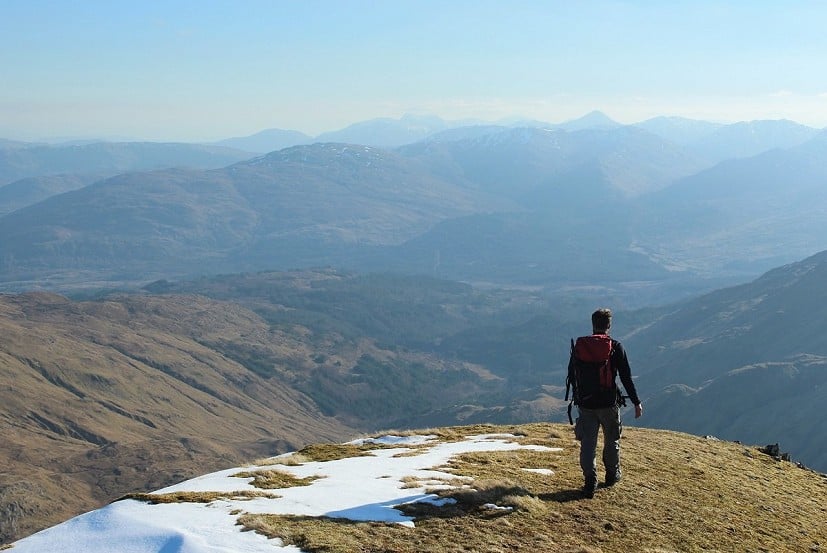
In the 21st century, the hill-goer's connection to the language is typically through hill and place names. The land is thickly quilted in terminology and phrases, some 'modern', others quite ancient. These names were collected through the mid-19th century by the Ordnance Survey, and written up in books now freely available on the internet. These volumes give a place name, a description of that feature and the name of the local person who supplied the information. They are a wealth and a goldmine that would otherwise have been lost, and in a world where language conventions evolve, this recording has served to freeze those names in time. In our era of standardisation, they will likely remain in this form. In areas that no longer support a human population sufficient to name every hill and hollow of the land, these names serve as a link back to that past, an act of preservation on the part of the Ordnance Survey.
The prior settlement of the mountainous Highlands was by a populace who put the high ground to use via cattle. They may not have settled permanently up high, but the hills were travelled to their greater extents and were often lived upon in the summers. In the 18th century, the Highlands were forcibly integrated by the south into a fully monetary economy, placing the region at a disadvantage when it could not operate as it traditionally had. This meant that the Gaelic culture and language disintegrated via the extraction of people: you could say this was just a consequence of 19th century capitalism, but many of the processes were intentional with very real human consequences. The census bears witness to the continual attrition, and we see a wilting of the language that continues into the present.
Set against this historical background is the modern hill-goer's adoration of the wilderness, an appreciation that often excludes the human story of the land. Faced with such solitude in these glens, it is hard to believe that human populations were there at all, so low was their impact. The emptiness was enacted by sheep farming, then promoted by the shooting estates and became self-perpetuating. More recently, it has become legislated for in Government as wild land.
Thanks to the battle of Culloden, and its aftermath, 1746 may arguably have been the most definitive year in the past millennium for the Gaelic language. It would be wrong to say that the events of that year were singularly responsible for undermining it, but they set in motion a chain of events that did. Little is now left of the language, but there are moves to reverse that. Gaelic still thrives on the Hebrides, in the cities and it finds a youthful population in Gaelic-medium education.
And then there is the Highland society before 1746, before its back was broken. Later history screams so loud that it is sometimes easy to forget what went before; a language that became one of the earliest written forms in Europe, of awesome intellectual and artistic maturity through Iona. It's a language that developed through bardic tradition to flourish as some of the finest words written about the Highlands: political, observational, and expressing deep reverence for the ocean and the mountains. Alexander MacDonald and Duncan Bàn McIntyre exist as figureheads of this form.
Spending time in the Highlands whether through walking, bothying, Munro bagging or climbing, can be a great way to interact with, and appreciate this culture. Having a location to tie your knowledge to gives relevance and context to the language, its people and their customs. The Highlands may even become a place to be lived among, rather than simply as a playground for the hunter or hiker, and we should not be stuck in the past in treating it as such. Perhaps the Highlands should be allowed to step fully into the 21st century?
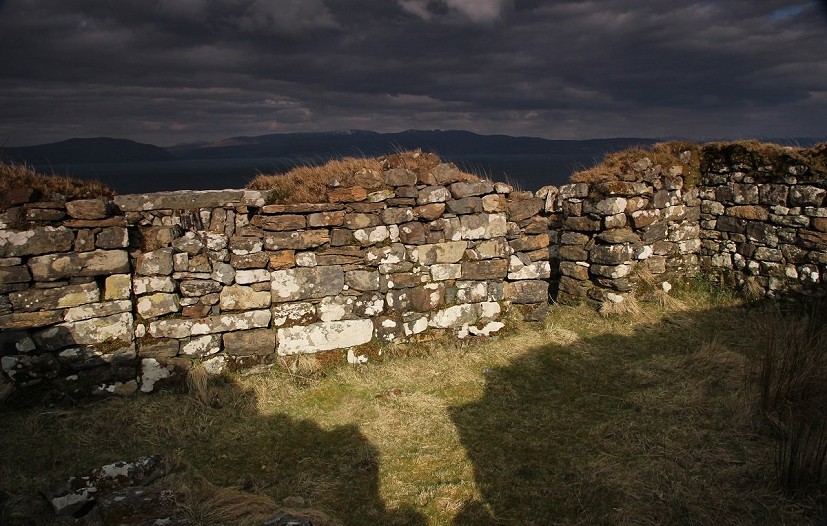
So to understand the tongue is to learn more about the country and the people that have inhabited its land. The Gaels possess vast treasures of music, poetry and art; the Celtic culture is so distinct that there is a wealth of meaning sitting under the noses of all hill-goers whether it is known or not. The map names are just the tip of the iceberg. Many mountain names are simply descriptive but others reflect local people, events or mythologies. Some names personify their mountains, others concern individuals. And the more you know, the more the maps open out to you. In addition to the Gaelic, the western seaboard is rife with Norse influence while the Southern and Eastern Highlands are permeated by Scots.
If you have never looked into the language before, the glossary below will get you started. If you have spent time in the Scottish hills, many or all of these words will have a resonance. We have land and language tied closely together, a place with immense and unique ambience. If you are looking to take the language further, support in Gaelic language learning is only on the increase - worth a go, surely?
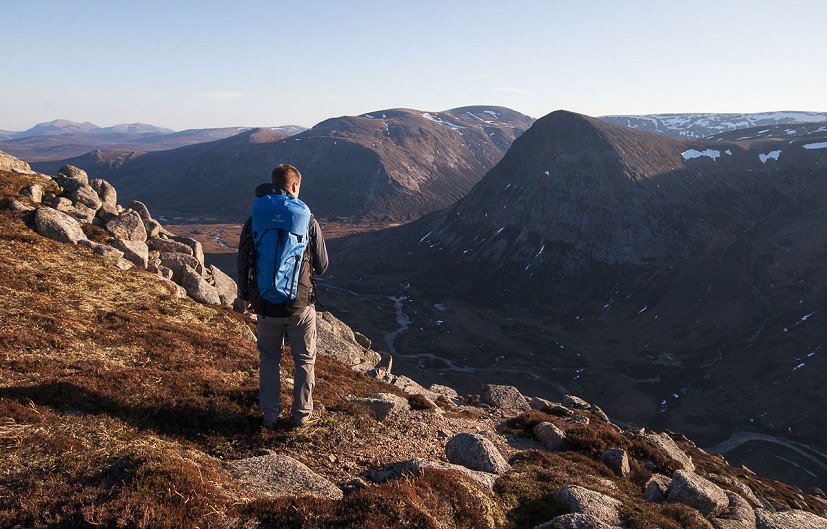
Hill names
- Beinn (ben) – hill. Very common name across the Highlands, often anglicised to Ben
- Càrn (karn) – hill/pile of stone. Common in the Eastern Highlands and sometimes the NW Highlands
- Cruach (kroo-ach) – round hill/stack
- Maol (moo-il) – a bare head
- Meall (mee-al) – lumpy, round hill
- Mullach (moo-lach) – denotes the 'top' of something. i.e. Mullach nan Coirean (top of the coires)
- Sgùrr (skoor) – pointed or craggy peak, particularly on the west coast
- Stac – stack
- Stob (stop) – protrusion or lumpy hill
Topographical features
- Aonach (oo-nach) – ridge/upland
- Bealach (be-ALUch) – pass
- Ceann (kee-awn) – head. Often anglicised to Kin- (as in Kinlochleven, head of Loch Leven)
- Coire (kor-uh) – corrie
- Creag (crek) – rock/cliff
- Druim (droim) – ridge
- Gleann (glown) – glen
- Leacann (le-achan) – broad slope
- Socach (Socach) – snout, similar to sron
- Sròn (srone) - nose
- Stùc (stook) – pinnacle/peak
- Taobh (toov) – side, flank
- Allt (alt) – stream
- Abhainn (a-wain) – river
- Eas (eas) – waterfall
- Rubha (roo-a) – headland/promontory
- Caolas (koo-las) - narrows
- Loch – loch
- Inbhir (een-yer - English Inver) – confluence of waters, mouth of river
- Eilean (ellan) - island
Colours
- Bàn (ban) & Fionn (fyoon) – fair coloured
- Buidhe (boo-ee) – yellow
- Dearg (jerrack) – red
- Liath (lee-a) – grey
- Geal (gee-al) – usually denoting white
- Ruadh (roo-a) – red / rust-coloured
- Gorm (gorom) – blue, but sometimes green
- Glas (glass) – grey-green
- Odhar (o-ar) – brown
- Airgead (er-i-ged) – silver
Description
- Mòr (more) – big/great
- Beag (bek) – little
- Breac (brach-k) – speckled, spotted
- Caol (cool) – slim
- Fada (fata) – long
- Sean (shen) – old
- Ùr (oor) – new
- Meadhan (mee-an) - middle
Animals
- Crodh (crow) & sprèidh (sprey) – cattle
- Bò (boe) - cow
- Damh (dav) – stag
- Fiadh (fee-a) – deer
- Laoigh (loo-ugh) – calf
- Madadh (mat-ay) – dog
- Earb (err-ap) – roe deer
- Muc (mook) – pig
- Caorach (KOO-rach) – sheep
- Gobhar (goe-ar) – goat
- Eun (ee-un) - bird
- Fitheach (fee-uch) – raven
- Iolaire (ee-o-lair) - eagle
Trees
- Craobh (kroov) – tree
- Beithe (bey-e) – birch
- Feàrna (fee-arna) – alder
- Darach (darach) – oak
- Giuthas (gyoo-as) – pine
- Doire (dor-uh) & Bad (bat) – copse of trees
- Desert Island Peaks: Kevin Woods 23 Mar, 2021
- REVIEW: Mountain Equipment Super Couloir Glove 20 Feb, 2018
- The Big Routes: The Mullardoch Round 1 Sep, 2017
- REVIEW: The Last Hillwalker by John Burns 14 Jul, 2017
- The Big Routes: All the Kintail Munros 27 Apr, 2017
- REVIEW: Montane Endurance Pro Jacket 6 Jan, 2017



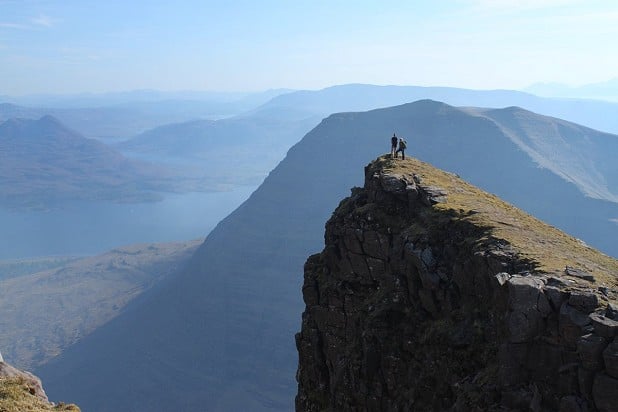
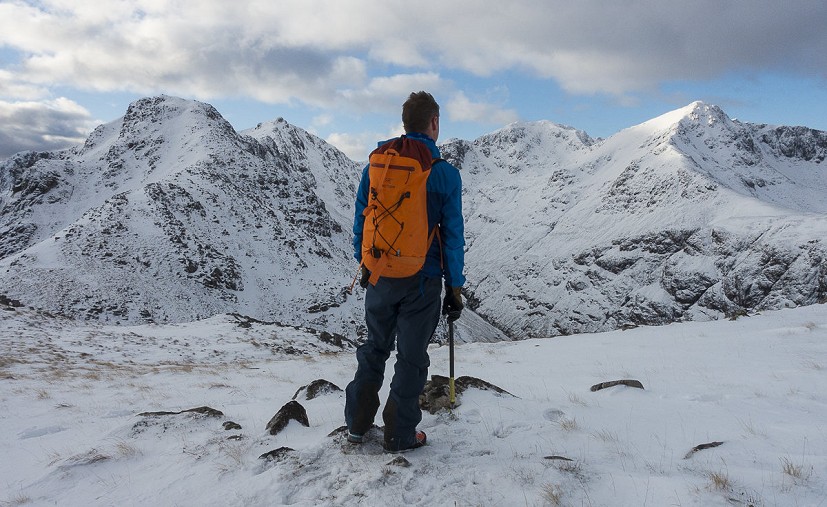
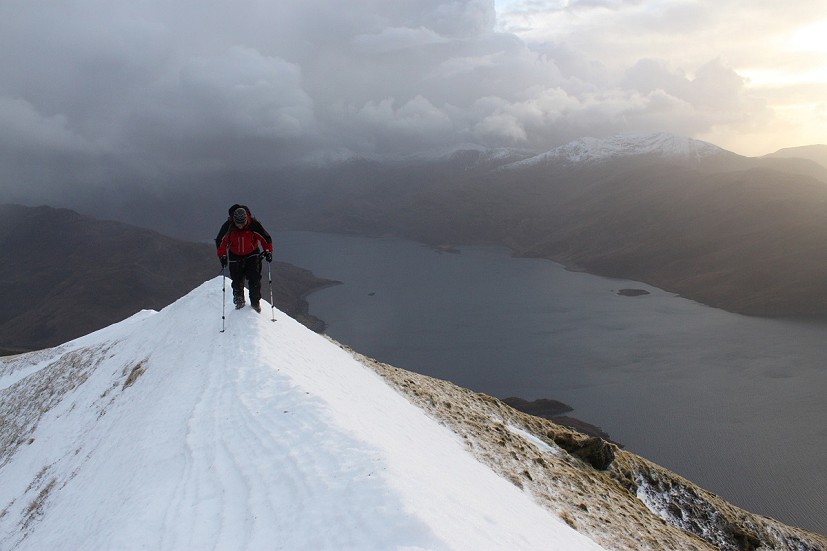




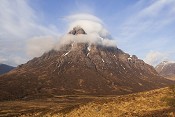
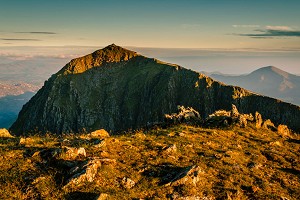


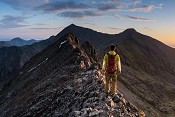
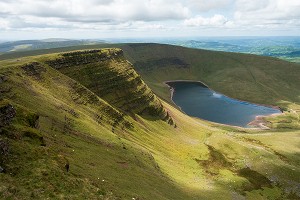
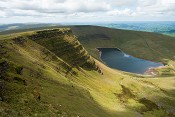
Comments
There are some fantastic online resources out there for anyone interested in learning the language.
http://www.learngaelic.net is probably the best of those although http://dailygael.com/ are running a series of 'learn gaelic with...' articles that don't take themselves too seriously ????
For those in London, https://www.citylit.ac.uk/courses/languages/celtic/gaelic-scottish links to the CityLit Gaelic course, current home of the (allegedly) oldest continuous Scots Gaelic course in the world. The beginners' level is well worth it to get more out of Scottish trips.
And here are the online name books, mentioned Iin the article.
https://scotlandsplaces.gov.uk/digital-volumes/ordnance-survey-name-books